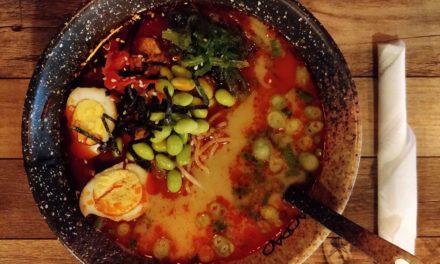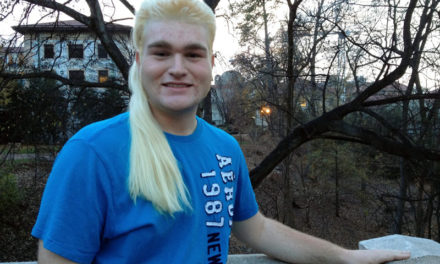
(Emory Wheel/Ha-tien Nguyen)
Picture a vast field of wheat gently swaying in the breeze, or a dense forest teeming with life. From the towering trees to the smallest blade of grass, plants are essential to life on Earth. They provide people with food, oxygen and medicines and are critical to the health of Earth’s ecosystems, helping humans to combat a wide range of diseases.
As scientists delve deeper into the mysteries of the plant world, they are discovering an arsenal of antiviral agents in the complex biology of these fascinating organisms. Emory University researchers Cassandra Quave (00C) and Caitlin Risener (24G) were able to not only discover the wonders of nature, but also harness them to tackle one of the biggest challenges facing the planet: COVID-19 and its emerging variants.
Quave, a medical ethnobotanist and associate professor of dermatology at Emory School of Medicine, served as the lead researcher of a study that examined plants’ antiviral activity against COVID-19. Her motivation for this research stemmed from the belief that the plant world may be able to save countless lives and quell the onslaught of plaguing viruses.
“There are many examples of essential medicines that were developed based on molecules originally found in plants,” Quave wrote in an email to the Wheel. “Take, for example, aspirin from the willow tree, morphine from the opium poppy, taxol from the yew tree, artemisinin from wormwood. I think that plants will continue to serve as a source of medicine for treating various diseases, including infections.”
People might be tempted to explore North American fields, bring home a few goldenrod stems and eagle fern plants and incorporate them into their meals as natural remedies for anti-inflammation, diuretics and urological issues. However, Quave and Risener warned that consuming these plants without proper isolation and extraction of active ingredients is potentially dangerous and toxic to the human body. They added that people should hold off on any trips to explore tropical landmarks until the plant extracts are deemed safe to consume.
“There is much still for us to evaluate concerning the safety and efficacy of these plant compounds in different lab models,” Quave wrote.
According to the Emory University Herbarium, Quave’s lab curates the Quave Natural Products Library, a website that contains a wide collection of botanical and fungal extracts from plants and fungi worldwide. Researchers at the Quave lab settled on using Quave’s Library to test 1,800 extracts and 18 compounds for activity against COVID-19. Through tedious observations, Risener said that Quave’s research group was able to identify the tall goldenrod and eagle fern extracts as the strongest candidates as viral kryptonites.
Quave and her research group explored fields in northern Georgia and used on-site sampling methods to score concentrated amounts of the tall goldenrod and eagle fern extracts. Once back in the laboratory, the researchers held the extracts in test tubes as they devised methods for their potential to be explored.
With only a small percentage of plants having been studied for their pharmacological potential, Risener said that Quave’s research lab is still beginning to explore nature’s medicines.
“Plants are made of thousands of compounds that they have evolutionarily created to defend themselves from things in their environment,” Risener said. “We as humans could not even dream up some of the complex molecules that plants have created to protect themselves.”
According to Quave, this makes examining the relationship between plants and medicine important. Quave and her research group were able to successfully apply knowledge from traditional medicine to determine which part of a plant and virus-like model to use as a starting point for their research on medicinal plants.
Quave and Risener chose virus-like particles to act as the threats to safety in this research and the plant extracts to act as the superheroes that eventually save the day. Risener said proteins and molecules from the plant extracts fit into their corresponding receptors on the surface of the virus like a lock being inserted into a key.
This antiviral activity is like nature’s own defense system. Just like how the human body has an immune system to fight off infections, plants have protein molecules that block the virus’ receptor sites to prevent infection.
When the researchers noticed the subtle hum of green color under fluorescent lighting that indicated that viral activity had been suppressed, they realized they just might have harnessed the power of these extracts as antiviral agents, and they may be able to save countless lives and prevent the spread of dangerous viruses.
To further test these results and confirm that the plant extracts could inhibit COVID-19, the Quave lab teamed up with co-author and Frances Winship Walters Professor of Pediatrics Raymond Schinazi.
They focused on using Schinazi’s highly-rated biosafety laboratory as a place to safely handle the infectious COVID-19 particles.
Researchers had to assess these extracts’ performance against infectious COVID-19, so the plant extracts and COVID-19 particles were placed in test tubes with a fluorescent light illuminating their complex to detect any sighting of a green protein. Given that the extracts were successful in inhibiting the virus-like particles, it was no surprise that the COVID-19 virus was prevented from causing an infection.
To this end, Schinazi believes that isolating active ingredients and improving their potential as drugs for COVID-19 is a step in the right direction.
“There is still a lot of work to do in order to advance these extracts forward,” Schinazi said.
From decoding plant genomes to exploring the potential of COVID-19 medication, plant research is revolutionizing the way people think about nature’s biomedical uses. So, the plants growing by the roadsides or in backyards might just hold the key to defeating viruses like how plants in northern Georgia fields could help fight against COVID-19.
Aila Sheri (she/her) (23Ox) is from Lahore, Pakistan, majoring in psychology at the Emory-Oxford campus. Outside of the wheel, Sheri is interning at Positive Impact Health Center advocating for HIV awareness on social media platforms. She previously interned as an academic writer at a counseling agency in Pakistan and would love to explore the field of writing and journalism in the future.






